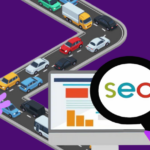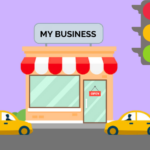Intro
Your small business can experiment with a variety of marketing channels. We outline the various marketing avenues that can help your campaign succeed.
The founder of modern management, Peter Drucker, once said: “Innovation and marketing are the only two things in a firm that generate profits. Cost is everything else.
But how can you decide which marketing channel to use when there are so many options?
Marketing distribution channels
This article highlights 10 marketing distribution channels and how to make the most of each one for your benefit.
The best marketing channels to use for your business |
- Search engine optimization (SEO)
- Content marketing
- Email marketing
- Social media marketing
- Word of mouth marketing (WOMM)
- Influencer marketing
- Offline advertising
- Online advertising
- Partnership marketing
- Community building
The best marketing channels for your business are |
There are numerous marketing methods available to you, regardless of the size of your company. But the key is, do they match your needs and goals?
Top 10 marketing channels
Here is a list of the top 10 marketing channels currently used by contemporary organisations to assist you in responding to that.
1. Search engine optimization (SEO)
According to HubSpot, 41% of consumers use search engines when they’re ready to buy, while 62% use them to learn more about new businesses, products, or services.
It’s very evident that search engines are still the preferred technique for discovering information online when you consider the fact that trillions of Google searches are performed annually.
The technique of getting your website to appear high on the search engine results pages (SERPs) for a certain phrase or keyword is known as search engine optimization. This makes your content visible to users who are looking for the phrase or a term that is related to it and makes it simple for them to get it.
Because you are not paying for ad placement, SEO allows you to receive “organic” website traffic from search engines.
As SEO is a continually evolving technology, SEO experts must be flexible in their strategies. The following SEO fundamentals, however, remain largely constant throughout time:
Crawlability | Can your content be found by search engines?
Site structure | How must the search engines prioritize and organize your content?
Keywords | What is your site’s content about?
Backlinks | Does your content provide reliable information on the topics you write about?
2. Content marketing
It’s a massive marketing no-no to blast current and potential clients with “buy” messages when they’re not ready.
They will avoid you like the plague since they will believe that your sole concern is making a sale, but they will also probably tell their relatives and friends about the incident. You will get a bad reputation as a result of this (more on this marketing channel below).
The goal of content marketing is to draw in a certain market segment by regularly creating and disseminating valuable information, such as blog posts, videos, infographics, ebooks, case studies, interviews, white papers, etc.
The purpose of content marketing is to persuade prospects or consumers to take a beneficial action for your business.
Businesses use content marketing to |
- Build or position a brand
- Generate leads
- Retain customers
- Increase sales
- Provide pre-and post-sale information with their target audience’s needs
- Support SEO and social media marketing initiatives
- Establish authority/reputation
3. Email marketing
According to a marketing research firm, the number of email users worldwide will top 4.3 billion by the end of 2023. This makes sense. How many people without an email address do you know? Not many, right?
Email marketing is an effective approach to interacting with people who have expressed interest in your business, product, website, or brand because of how frequently it is used.
To build relationships with both present and potential customers, email marketing is used.
It’s a channel that’s frequently employed for brand development, customer communication, and the distribution of marketing messages that directly address consumers’ needs as defined by their place in the purchasing process.
To get you started, below is a summary of the email marketing procedure |
- Choose an email marketing software application.
- Create an email list.
- Add your list of contacts to your email marketing platform.
- Craft a compelling welcome message.
- Create customizable master templates with your branding and message. This is so you don’t always have to start from scratch when you want to send a follow-up email or make a newsletter.
- Write a persuasive email with an engaging subject line.
- Preview and test your email before sending it.
- Send your email. Make sure to research the best sending time for your industry to drive open rates.
- Track and measure your results.
4. Social media marketing
According to estimates, there are over 3.5 billion social media users worldwide as of 2019, with Facebook still the most popular social media site for building an online audience and interacting with clients.
Social media marketing makes use of platforms like Facebook, Twitter, LinkedIn, Instagram, YouTube, Snapchat, and Pinterest to help you create a name for yourself, expand your fan base, forge connections, and make sales.
5. Word of mouth marketing (WOMM)
How likely are you to buy anything a trustworthy source suggests? When was the last time you looked into a product, service, or company after seeing a friend’s post on social media?
The research found that 83% of Americans are more likely to buy a good or service that comes highly recommended by a friend or member of their family.
Word-of-mouth marketing (WOMM), commonly referred to as word-of-mouth advertising, occurs when consumers share their appreciation of a brand, product, or service. It is the outcome of both focused efforts and natural experience sharing.
Positive word-of-mouth from satisfied consumers can influence other purchasers’ intention to buy when it is magnified via social media.
6. Influencer marketing
Influencer marketing refers to the practice of using influencers, or persons with a sizable social media following, to mention or recommend your good or service to their audience.
Influencer marketing campaigns include |
- Product reviews
- Sponsored content
- Content and product collaborations
- Giveaways and competitions
- Platform “takeovers”
7. Offline advertising
It’s simple to dismiss offline advertising as a useful marketing or sales tool in the internet age. But keep in mind that not everyone uses the internet to research the goods or services they require.
10% of American adults, according to a recent research poll, don’t use the internet. With a target originally set for 2017, the United Nations anticipates that by the end of 2019 more than half of the world’s population will be online, leaving 3.8 billion people without access to the internet.
This only means that there’s still a wide audience demographic that you can reach through offline advertising.
- Popular offline advertising methods you can use include |
- Business cards
- Giveaways or prizes at local events or fundraisers
- Speaking engagements
- Networking at applicable local and national events
- Trade magazines and other industry-specific publications
- Print advertising
- Direct mail
- Marketing collateral (e.g., flyers and brochures)
- Trade shows and customer appreciation events
- Branded equipment and merchandise
- Cold calling
- Holiday gifts or cards (e.g., Christmas gift cards)
- Promotions or discounts targeting a specific demographic (e.g., student discounts)
- Billboards
- Radio or television spots
- Guerrilla marketing (also known as “shock and awe” marketing)
8. Online advertising
Online marketing makes use of the internet to advertise a service, good, or marketing message. On websites like Google, Facebook, Instagram, Twitter, and individual webpages, you can typically see online adverts. Types of online advertising include |
Display advertising | Uses images and text. Examples are banners and popups.
Search engine marketing (SEM) | Not to be confused with search engine optimization, which is a free online marketing channel. With SEM, an advertiser pays every time someone clicks on their search ad. It’s also known as PPC (pay per click) or paid search.
Paid social | Examples are the sponsored or promoted posts you see on Facebook, Instagram, and LinkedIn.
Native advertising | Paid content that matches the style and tone of the site publishing it.
Remarketing | Retargets people who have already seen or interacted with content on your website.
Affiliate marketing | The use of affiliates to promote your product or service. Affiliate marketers earn a commission for each sale or lead as a result of their marketing efforts.
Video ads | The use of videos instead of still images or text in your advertisements.
Display advertising. Uses images and text. Examples are banners and popups.
Search engine marketing (SEM).
Not to be confused with search engine optimization, which is a free online marketing channel. With SEM, an advertiser pays every time someone clicks on their search ad. It’s also known as PPC (pay per click) or paid search.
Paid social.
Examples are the sponsored or promoted posts you see on Facebook, Instagram, and LinkedIn.
Native advertising.
Paid content that matches the style and tone of the site publishing it.
Remarketing.
Retargets people who have already seen or interacted with content on your website.
Affiliate marketing.
The use of affiliates to promote your product or service. Affiliate marketers earn a commission for each sale or lead as a result of their marketing efforts.
Video ads.
The use of videos instead of still images or text in your advertisements.
Some key benefits of online advertising:
Cheaper than traditional ads | Businesses might expect to pay anywhere between a few thousand dollars and $5.25 million for a 30-second spot on television (example: Super Bowl advertising). When done well, they can surely create a lot of attention for your company, but the expenses might be prohibitive for smaller businesses that typically don’t have much money set up for advertising. You can see why online ads are opening up new opportunities for small businesses when you contrast them with social media ads, which you may set at a minimum of $1 per day (for example, Facebook Ads impressions). Additionally, PPC advertising only charges you when a user clicks on your ad.
Powerful analytics | You don’t have to guess which particular online advertisement brought a buyer through the door thanks to the excellent data that are now available. Cost per click, the total number of impressions, click-through rate, conversion rate, and ad reach are additional metrics you may monitor and evaluate.
Targeting | Targeting, which enables advertisers to select a particular audience for each ad they run, is a key benefit of internet advertisements over traditional ones. For instance, Facebook Ads allow you to choose your audience’s location, age, gender, interests, income level, and work title.
9. Partnership Marketing
When two brands work together to develop campaigns that are profitable for both, this is known as partnership marketing.
Working with a company whose goods or services are complementary to your own is an economical method to expand your market reach and enhance the reputation of your brand.
Examples of this form of marketing include |
- Co-hosting events
- Creating co-branded content
- Affiliate marketing partnerships
- Referral partnerships
- Resell partnerships
- Product distribution partnerships, such as including a partner’s products in your giveaway bundles or packages
- Joint products
- Sponsorships
- Charitable partnerships
10. Community building
One of the best marketing tactics you can do is to create a community around a company. Take Harley-Davidson as an illustration. The company was on the verge of going out of business in 1983, but thanks to its unwavering dedication to creating a strong brand community, it emerged 25 years later as a multibillion-dollar corporation.
A brand community is a group of individuals who join together because of their ties to a product or brand — ideally, your consumers and target audiences.
Apple, Jeep, Walt Disney, Barbie, Lego, Xbox, Sephora, Lululemon, and Starbucks are a few other well-known firms with vibrant brand communities.
There are several advantages to building a brand community, such as:
- Brand loyalty
- Brand authenticity
- Feedback from actual users
- User-generated content that’s valuable for other forms of marketing such as WOMM and content marketing
- Marketing efficiency
Summing-up
The channels mentioned above are just ten of the many you might use to achieve your intensive distribution goals. More are available. Fortunately, using every marketing channel possible won’t guarantee your success. In actuality, doing so is probably doomed to failure.
Instead, examine each channel you are currently utilising, then add or remove as needed in response to the findings.
At the end of the day, you only want to keep the channels that give you the best ROI.
Give us a call to know more about our digital marketing solutions and packages that are curated keeping your marketing requirements in mind. We’re here to help you grow.
You can reach us |
By Phone | 020 3588 4240
Website | www.shergroup.com and you can chat with us from here
Email | [email protected]
Facebook | Check out Shergroup on this channel and message us
Twitter | Check out ShergroupChat on this channel and message us
LINKEDIN | Check out Shergroup’s LINKEDIN feed – and please FOLLOW us!
Instagram | Check out ShergroupChatter and follow us!






